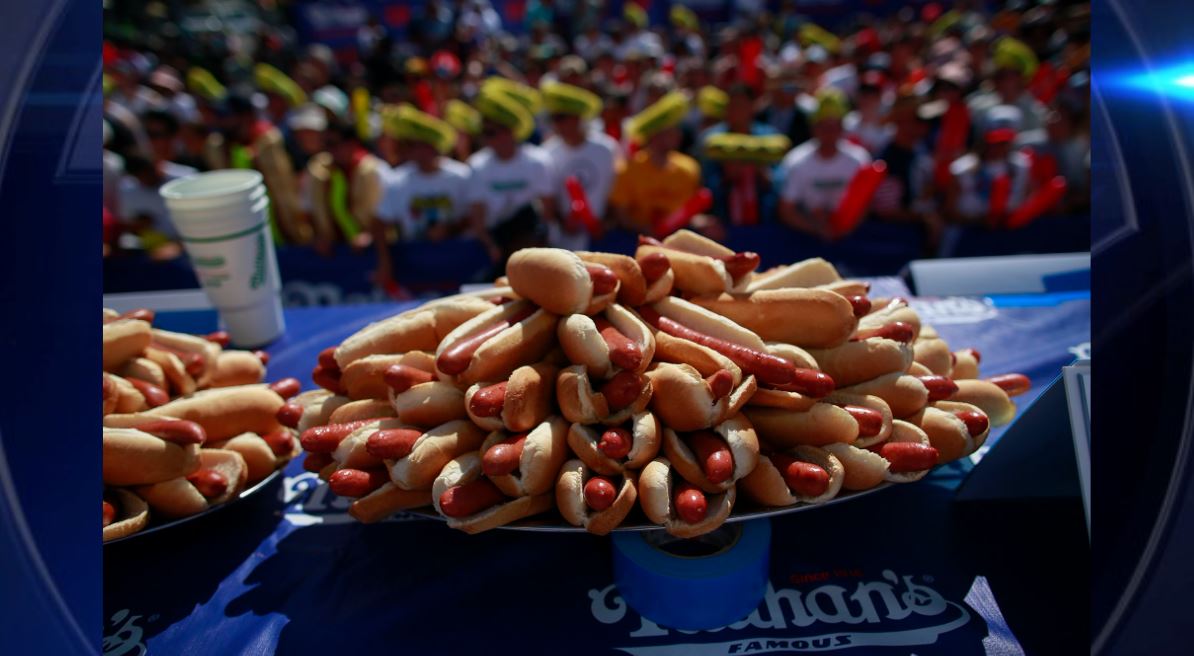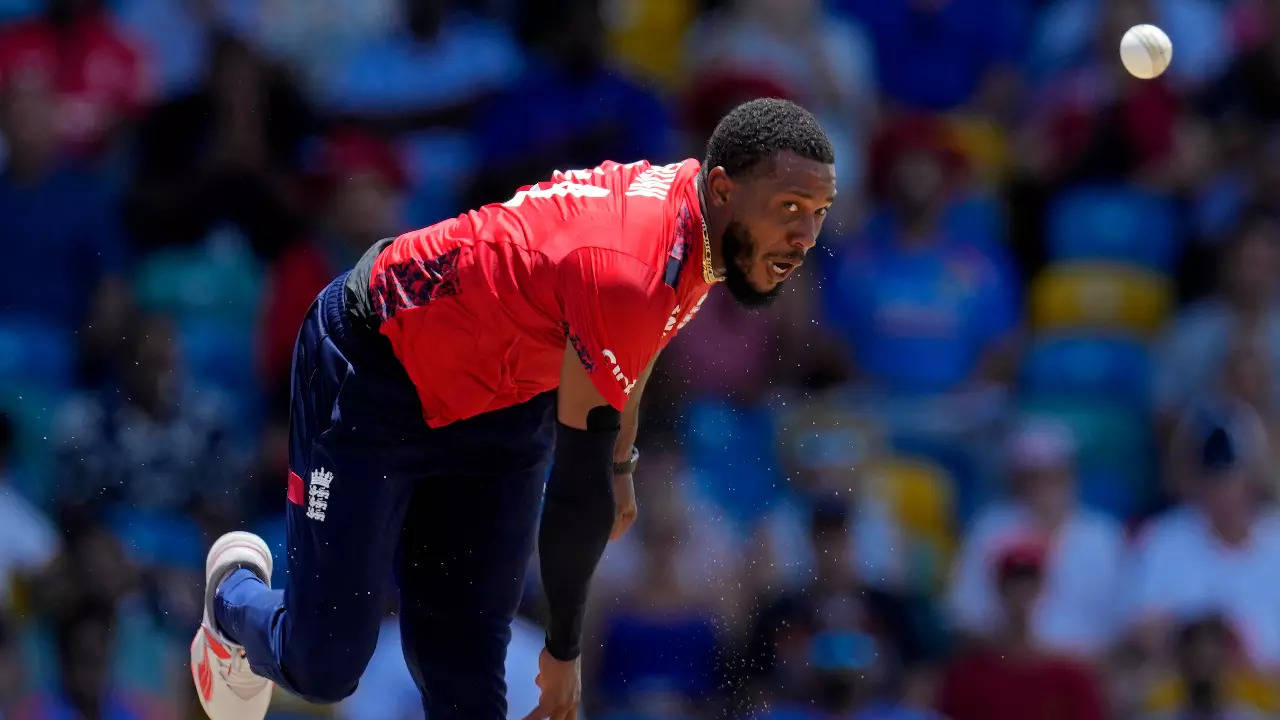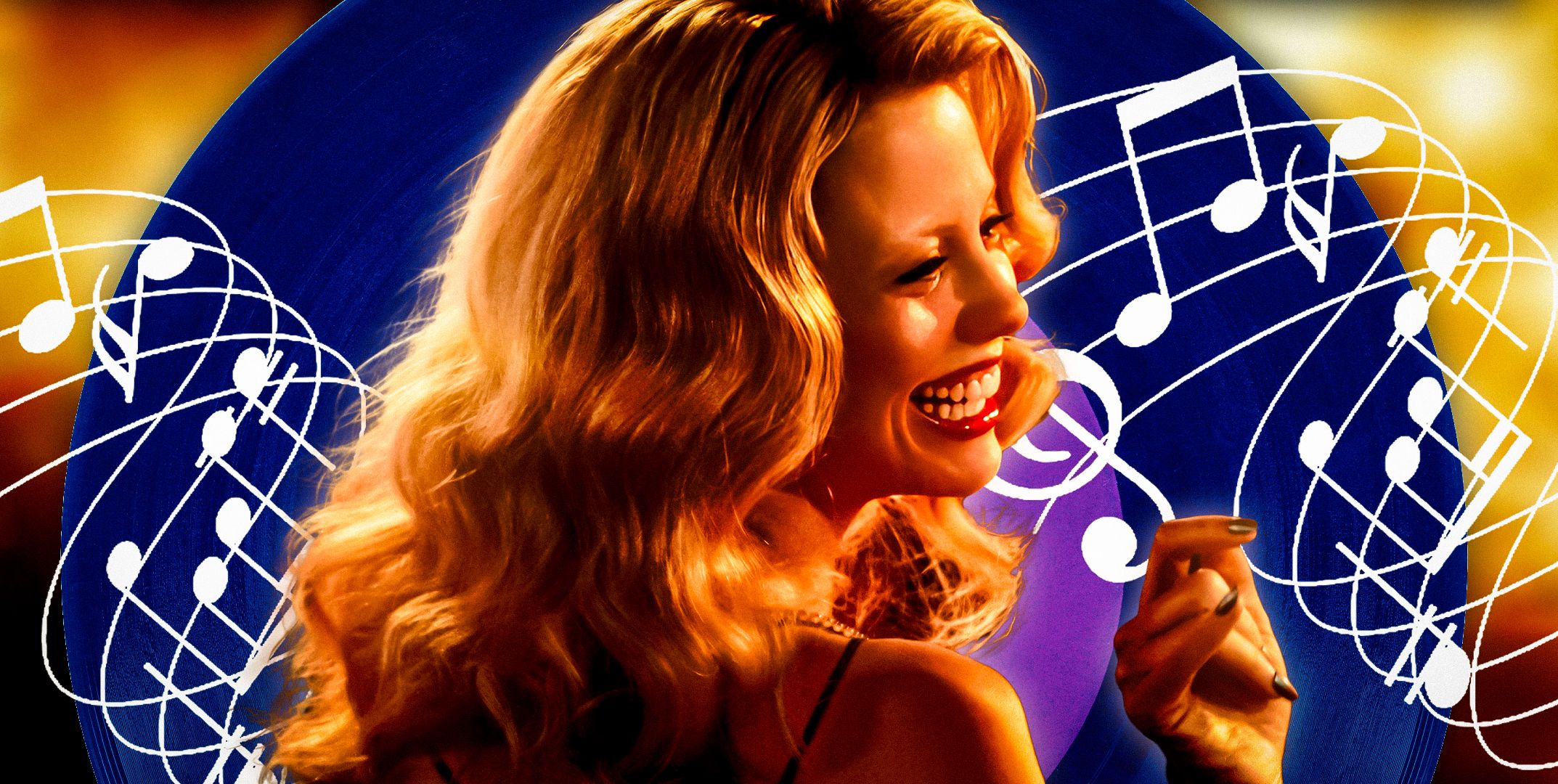New York (CNN) — Every year since she was 15, Jacqueline Lewis and her family have come together on the Fourth of July to honor a great American tradition: the Nathan’s Famous hot dog eating contest.
“I think people want to know how many hot dogs a human being can eat in that amount of time,” Lewis, now 26, told CNN on a warm June day while eating mini corn dogs (at a leisurely pace) outside the original Nathan’s location in Coney Island. “I think they want to know.”
Lewis and her family aren’t the only ones who want to see how many hot dogs the contestants can devour in 10 minutes. According to the hot dog brand, nearly two million people watch Nathan’s Hot Dog Eating Contest on ESPN each year. Tens of thousands of viewers descend on Brooklyn’s Coney Island to watch the event in person. Contestants train for months in advance, preparing their bodies to burn thousands of calories in just a few minutes. When it was recently announced that reigning champion Joey Chestnut was disqualified from the competition this year because of his contract with Impossible Foods – a plant-based meat company – it made national headlines.
Nathan’s and the marketing visionaries behind the annual event helped shape competitive eating as we know it today: a bombastic, ostentatious sport that some say symbolizes America’s obsession with excess.
But competitive eating has been around for a long time. A very long time.
Two men, many gingerbread
It seems as if people have always been fascinated by how much a person can eat and how quickly.
“Speed and volume competitions appear in Greek mythology, in which Edda’s of Norse mythology and even in perhaps humanity’s first novel, Apuleius’ The Golden Ass, written in the second century AD,” wrote Jason Fagone in his book Horsemen of the Esophagus: Competitive Eating and the Big Fat American Dream.
In the United States, the tradition dates back several hundred years. Fagone cites a Pennsylvania newspaper from 1793 that described an event in which two men “determined to eat 24 gingerbread cookies each.”
Over time, pie-eating contests became a regular part of Fourth of July celebrations and “a natural icebreaker for picnics, summer camps and fairs,” Fagone wrote.
In the 19th century, there were two main types of competitions, explains Adrienne Bitar, a lecturer in American studies at Cornell University and author of “Diet and the Disease of Civilization.” There was speed-eating – who could eat the most in a certain amount of time – and contests with no time limit, where the winner was the person who could eat the most, period. The food was simpler back then and had no tokens. People competed for onions, eggs, watermelon and cake.
The competitions were “very carefree,” she said, and nowhere near as physically demanding as they are today – they were “athletic, in the way that a three-legged race is athletic.”
When Nathan’s began organizing its annual event in the 1970s, it was more like these early contests. At the time, public relations experts Max Rosey and Mortimer Matz thought a hot dog eating contest would get Nathan’s some publicity. (They also seem to have invented the legend that the first Nathan’s contest was held in 1916.)
Back then, “it still had a kind of local flavor … the participants were mostly just big guys from Long Island,” Fagone told CNN. Participants would go in, eat a few quick hot dogs and go home to their own barbecues, he said.
According to the Coney Island History Project, Melody Andorfer was the winner of the first official Nathan’s contest in 1972. She ate 12 hot dogs in 5 minutes, beating all other contestants, men and women, she told the nonprofit in a 2020 interview.
The first year, Nathan’s used barrels and a wooden board to build the attendees’ table, she recalls. “They put a white plastic tablecloth on it. In front of you, they put hot dogs on a paper plate and no mustard, no drink. Just the hot dogs.”
A few decades later, in the 1990s, brothers George and Richard Shea took over marketing for Nathan’s. George Shea, who still hosts the competition, helped turn the homegrown event into a gigantic spectacle.
Hot Dog Advertising
Americans say the annual contest is about many things: Coney Island, the Fourth of July, patriotism. But at its core, the event that launched the rise of mainstream competitive eating in the United States is about publicity, says the man who organizes the contest.
“This sport didn’t start out as a sport. It was a platform for exposure for Nathan’s and certainly many other brands in the years that followed,” said George Shea, co-founder of Major League Eating, the professional league that oversees the competition today.
Shea took over the competition in 1991 when Rosey died. Before Shea took over, he said, the competitions featured a few cameras, a handful of contestants and “15 or 20 spectators who would randomly walk by and stop.”
As host, Shea has developed a persona to hype the event. He stands on stage wearing a flat straw hat and suit and tie. In the run-up to the competition, he makes grand statements about life and poetry while dramatic music plays. When he announces the contestants, he ratchets up the tension, treating the event more like a boxing match than a hot dog eating contest.
The gig is “a little bit Coney Island, a little bit sportscaster, a little bit apocalyptic preacher,” Shea said. “The whole thing is just fantastic. You go up there, there are no rules, you say and do what you want, and it’s just about getting moving, expressing emotion … and the reaction I get from people is generally, ‘This is not what I expected, and I really love it,'” Shea said.
It took a while for that performance to enter the mainstream. About a decade after he took over as head of the competition, Shea pitched a story to the LA Times. The article that followed introduced the idea to a new part of the country, he said.
Shea then signed deals for a documentary and a TV special – just as superstar Takeru Kobayashi arrived on the scene in 2001 and “turned everything on its head,” Shea said.
“It was a coincidence and very beneficial for both sides – the timing was very good because he was a tremendous star,” Shea said.
In his first year of participating in the competition, Kobayashi ate 50 hot dogs – almost twice as many as the 2000 winner.
Kobayashi showed “that you can treat (the competition) as a sporting activity and still excel,” Fagone said. The Japanese newcomer had taken the hunt seriously, trained and devised a novel approach (separating hot dogs from buns and breaking frankfurters in half before eating).
The intensity of the training and the success gave legitimacy to the whole endeavor. A few years later, ESPN began broadcasting the event.
An American tradition, for better or for worse
For some, food competitions are a symbol of American culture – both the good and the bad.
Eating contests are “a celebration of excess,” Bitar said, an essential part of the myth of America that attracted immigrants when the country was young. They represent “this larger fantasy, this national American fairytale of consumption without consequences.”
Kobayashi himself has shattered that fantasy, revealing in a Netflix documentary called “Hack Your Health” that he no longer feels hunger and fears the eating contest could have lasting effects on his health. (He still plans to compete against Chestnut in an upcoming Netflix special.)
The contests endure in part because of their shock value, Bitar said. Eating contests “break all kinds of etiquette and societal norms,” she said. “It’s one of those moments where all our rules are broken.”
Shea also pointed to an underlying tension as the reason Americans still watch Nathan’s hot dog eating contest after all these years. He described it as “the element of ‘Wait, you shouldn’t do that’ and ‘I can’t believe he’s doing this or she’s doing that.'”
For him, however, the competition is a special event that symbolizes something else: happiness.
“It’s part of New York City history…but more importantly, to me, hot dogs represent the joy of summer.”
Beatrice Fellman, 25, sees it similarly. The Coney Island visitor, who called the hot dog “America’s meal” on this warm June day, said it represents “patriotism and a good time.”
Fellman was one of many on the crowded boardwalk, which was flooded with hundreds of beachgoers trying to soak up the sun, towels and beach chairs in hand. The mood was jovial. Bass blared from the speakers and a live band played to about a dozen people dancing. Despite the heat, lines formed at both Nathan’s locations, where people waited for the famous hot dogs and French fries.
“We love the Nathan’s Hot Dog Eating Contest because we love how it brings the city together,” said Fellman, standing with a group of her friends all wearing Nathan’s Hot Dog Eating Contest T-shirts. “It celebrates a beautiful American comfort food, which is the hot dog.”
The-CNN-Wire™ & © 2024 Cable News Network, Inc., a Time Warner company. All rights reserved.




